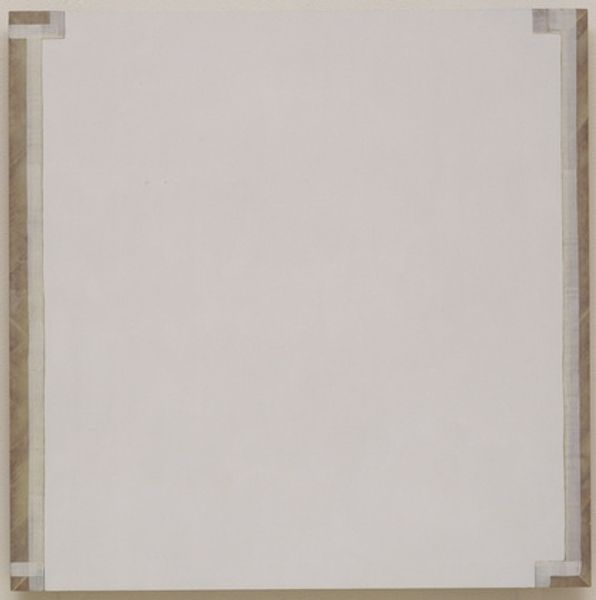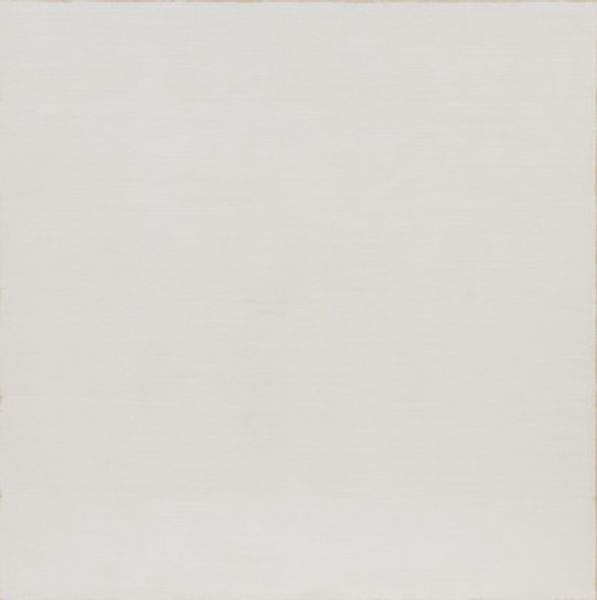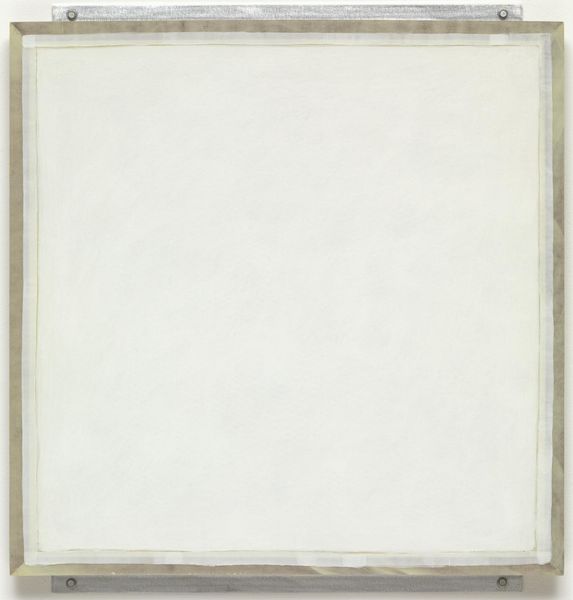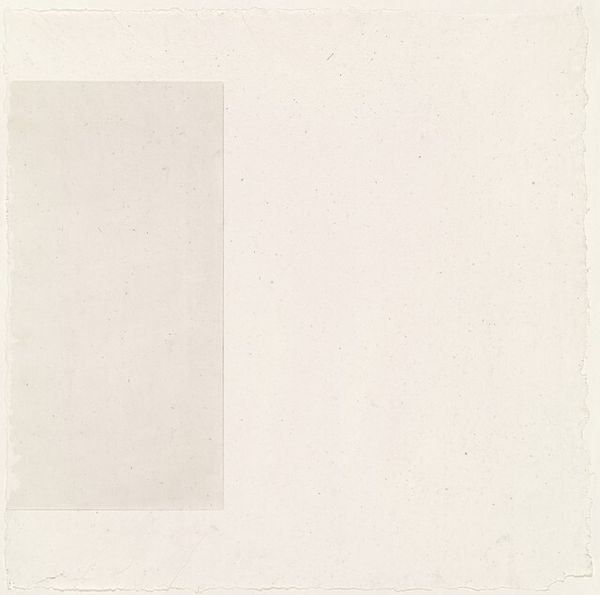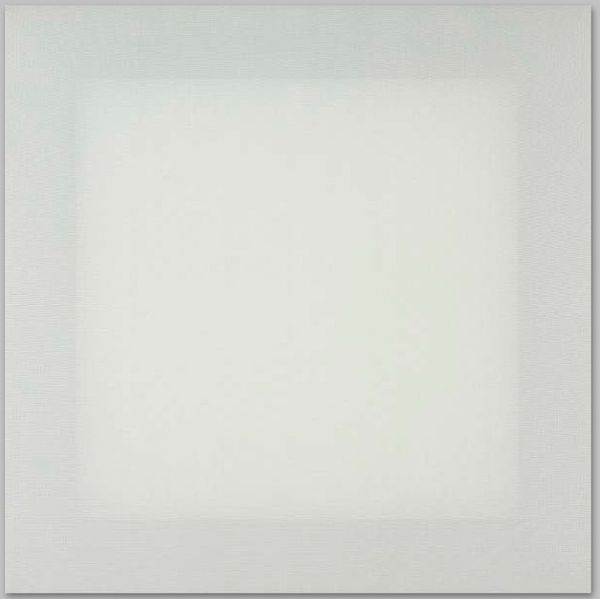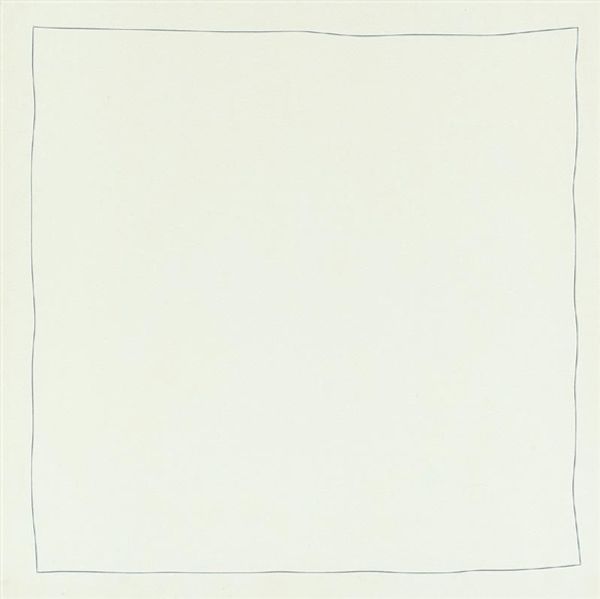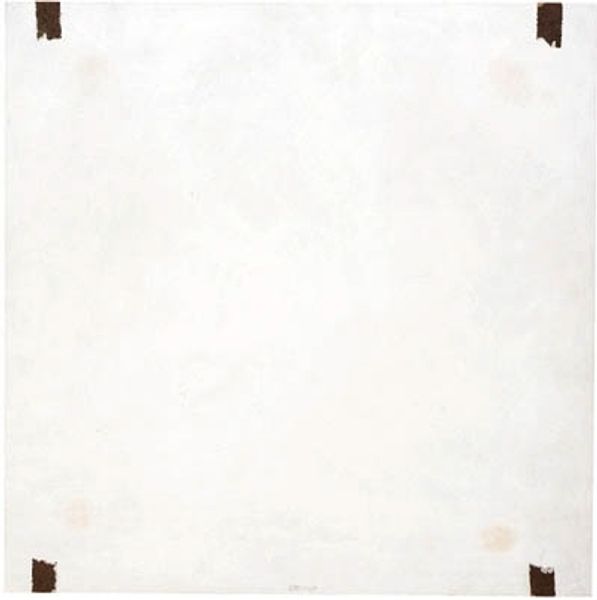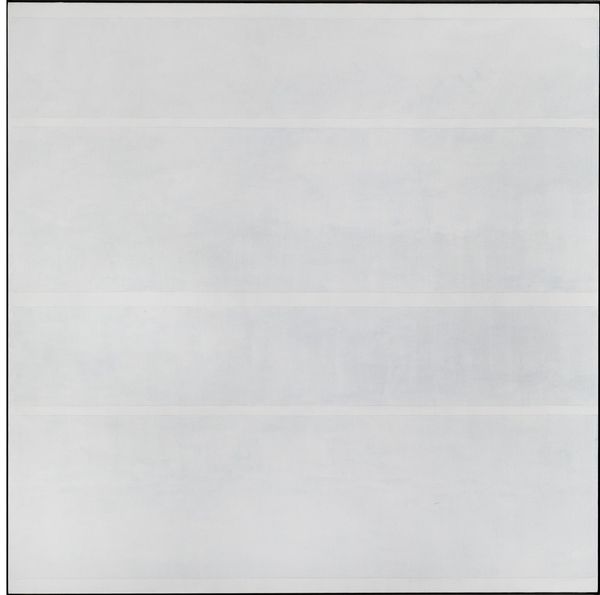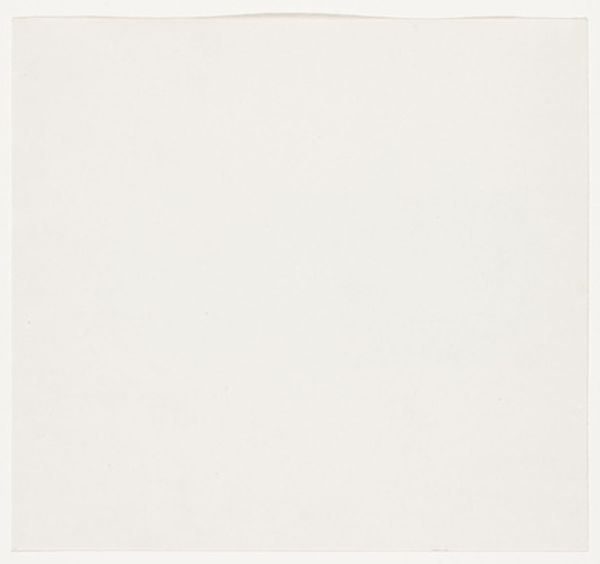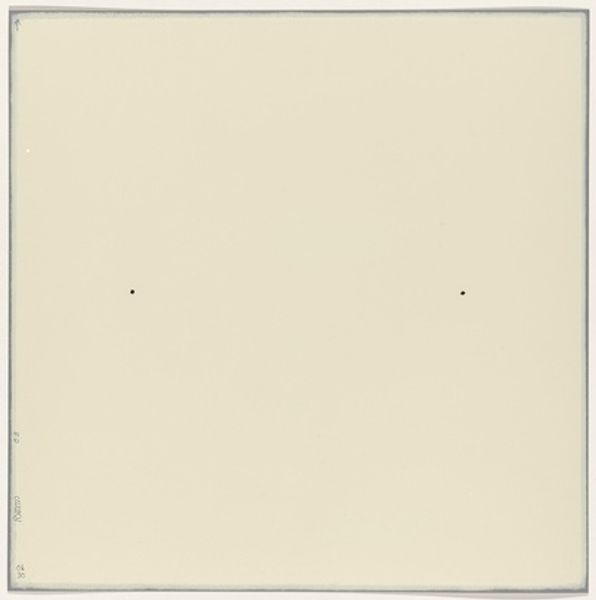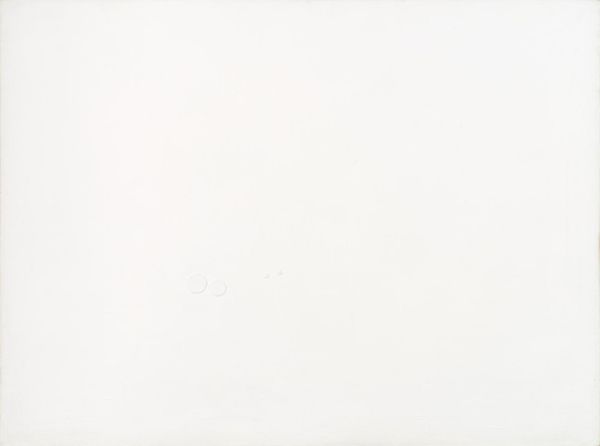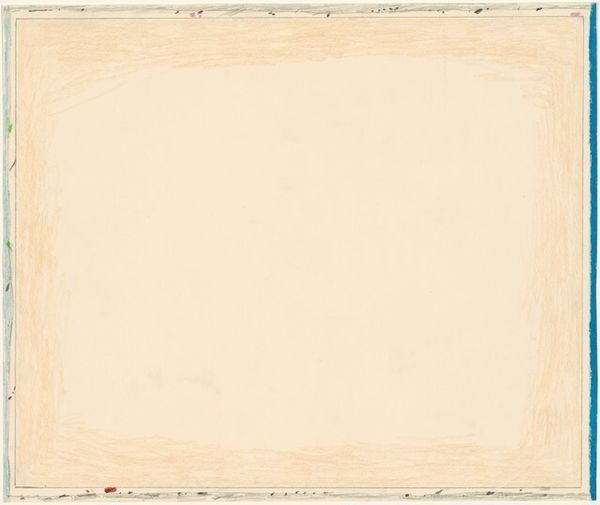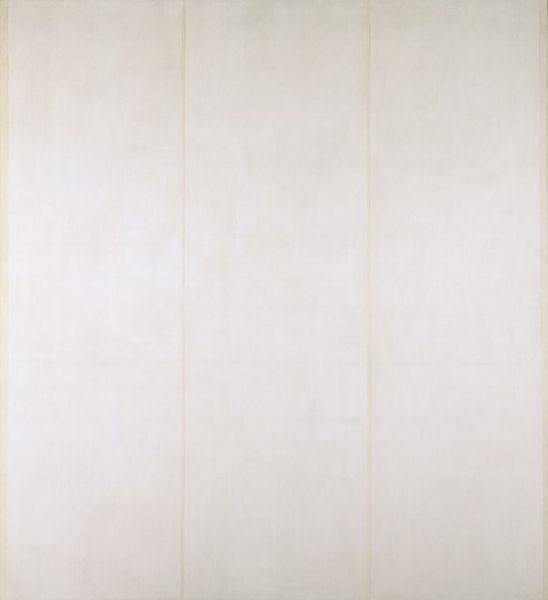
Dimensions: support: 982 x 918 x 38 mm
Copyright: © Robert Ryman | CC-BY-NC-ND 4.0 DEED, Photo: Tate
Curator: We're looking at Robert Ryman's "Guild," a square painting in the Tate collection. It’s almost entirely white. Editor: My first thought? Serenity. It's quiet, contemplative. The subtle variations in white invite a deep, almost meditative gaze. Curator: Ryman’s work focuses on the materiality of paint, the support, and the gallery space itself. The size here, nearly a meter square, insists on its physical presence. Editor: The visible fixings—those little metal corners—and the way the paint interacts with the support become part of the composition, blurring the line between the artwork and the mundane. Curator: Exactly. It's less about what is painted, and more about how painting is perceived. He's really asking, "What is a painting?" Editor: It makes you rethink what art can be, doesn't it? A challenge to see beauty in the simplest forms. Curator: Definitely. It's a reminder to slow down and look closely. Editor: Absolutely, and maybe a bit of a dare.
Comments
Join the conversation
Join millions of artists and users on Artera today and experience the ultimate creative platform.
tate 8 months ago
⋮
Ryman's work is an exploration of the fundamental elements of painting: support, paint, brushstroke and the relationship to the wall. Colour is eliminated in order to focus more clearly on these. This painting is one of a group of paintings Ryman made during 1982-3 that are constructions which incorporate fibreglass panels and aluminium brackets. Ryman used enamel paint in these works because it appears translucent when applied to fibreglass. In 1976 Ryman began to integrate external wall fasteners into the composition of his works. In 'Guild', the aluminium brackets are a structural part of the painting. They function as a bridge between the painting and its supporting wall, thereby expanding the visual territory of the painting to include the space in which it is shown. Gallery label, September 2004
